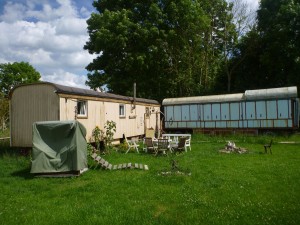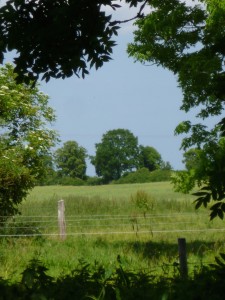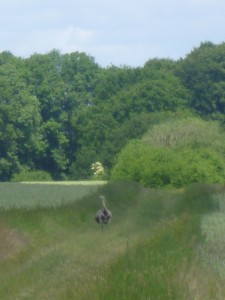What seems to be an eastern dump of 56 inhabitants right across the former border between East and West-Germany turns out to be a spot rich in hospitality, laid-back attitude and an openness I would not have expected. And forget about the accidentally displaced species such as the invisible king-crabs offshore in Norway. Check this!
After Fusion we set off for a quieter place. My most long-term friend (we have been following each other for 35 years now) is living in Lindow. Lindow? A village out in the Styx, in the middle of nowhere with almost no signpost directing you to it. Navigation is a must.
As it is for most East-German villages, the young move away and the old remain. A couple, him born and bred here, were the only ones left, when an architect in the late nineties discovered this place, bought himself a dilapidated stable house and started rebuilding it. At the time it seemed to be against all odds.
Since it turned to be a local hotspot for artists, musicians, well-off and nature-loving folk. Oven-builders, mechanics of all sorts, steel-artists, architects – you name it. No supermarket, no church, no nothing. But a bus-stop and a post box. This is the entire local infrastructure. Plus good vibes, a helpful mutual neighbourhood and a peaceful live-together.
 My friend is living in old circus-waggons at the end of the village with a view across the fields and sunshine all day long. Very laid-back. We were welcomed with open arms. Hectic city-stress is not the place here to dish out. Just calm down and relax.
My friend is living in old circus-waggons at the end of the village with a view across the fields and sunshine all day long. Very laid-back. We were welcomed with open arms. Hectic city-stress is not the place here to dish out. Just calm down and relax.
If you intend to visit the place, just forget. There is no hotel or the such like. You have to know the people to be able to stay here and enjoy the place and time. Though in the surroundings there are a few summerhouses to rent. The nature is not breath-taking, but nevertheless beautiful to watch.
Best is to take your bicycle and to cruise around. But beware, you may come cross these chaps:
Is that a rhea? Yes it is! A rhea! A few years ago a couple of rheas escaped from their breed where they were kept amongst many for whatever reason. Having no natural enemy they did well out here and grew to a wild population of now 400-ish. Crazy. If you expect to see wild boar, eagles and wolves, you would not expect rheas, would you? They seem out of place here, but are real indeed. A horror to ecologists they have become common to the locals living here. And it is certainly a different experience to stop your car for a rhea than for a hedgehog or a REH.
The Baltic Sea isn’t far, few lakes invite for a swim too. And a daytrip to Lübeck is always worth doing. Best season to go is early spring, to see the yellow rapeseed in the hilly country-side, summer of course and later during the harvest, when the crop does not offer any shelter anymore to the rheas.
Give it a go. I remember once in Kenya, when I saw my first Zebra out in the wild and thought, „that is a crazy horse“. But to see a rhea in the wild here is an even crazier experience!



It has been written on this post no comments yet. Write the first comment now!